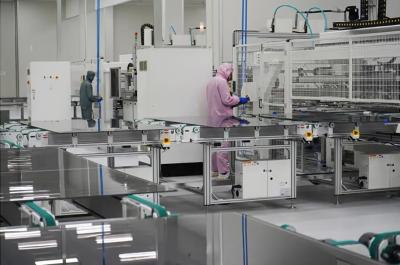Microquanta completes rooftop perovskite project
Microquanta has announced the completion of what it claims to be the world's largest building-integrated photovoltaic (BIPV) project based on perovskite solar panels. Installed on the translucent roof of the University Student Entrepreneurship Center in Shenchi County, Shanxi Province, the project has a capacity of 17.92 kWp.
Microquanta specified that its custom-designed double-glass perovskite modules measure 1,200 mm x 1,000 mm and achieve a light transmittance of around 40%, allowing daylight into the building interior while generating electricity.







